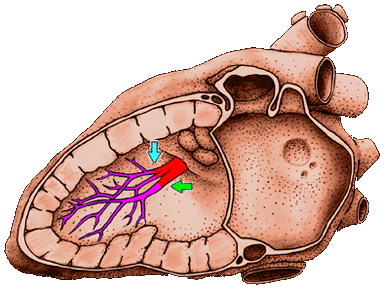
As illustrated in Chapter 1, the left bundle divides into a fan-like structure after it passes through the interventricular septum just under the aortic valve and then spreads over the left ventricular endocardial surface. The more anterior portion is referred to as the left anterior fascicle, and the more posterior portion is referred to as the left posterior fascicle.
